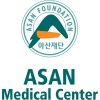
Design and Verification of Individualized Smart Assistive Devices for Stroke Rehabilitation
StrokeThis study aims to design and verify a multi-mode smart assistive device system for Stroke Rehabilitation by using EEG, fMRI, IMU and questioners

Motor Coordination and Grip Strength of the Dominant and Non-dominant Hand and Wrist in Post-stroke...
StrokeThis study aimed to assess how stabilization of the trunk and the upper extremity can change the parameters of hand/wrist motor coordination and grip strength in dominant and non-dominant paretic upper limb, in post-stroke patients and neurologically healthy subjects.

Individualized Blood Pressure Management During Endovascular Stroke Treatment
Acute Ischemic StrokeOptimal blood pressure management during endovascular treatment of acute ischemic stroke is not well established. Several retrospective data indicate, that there is a U-shaped relationship of admission blood pressure and functional outcome, where either very high or very low blood pressure are disadvantageous for the patient. Low blood pressure might lead to hypoperfusion in ischemic areas (i.e. penumbra) and to larger infarction sizes, while on the other hand, maladaptive high blood pressure might lead to edema and hemorrhage. Retrospective data investigating intraprocedural blood pressure and its influence on outcome is limited. Some studies indicate that hypotensive blood pressure drops from the level of the admission blood pressure lead to a worse outcome. Intraprocedural hypotensive drops are common during endovascular thrombectomy due to application of necessary sedative drugs for agitated stroke patients. We aim to investigate whether individualized blood pressure management with patient-specific blood pressure targets situated at the level during presentation might be associated with better functional outcome compared with general blood pressure targets for patients during thrombectomy. For this purpose, we plan to perform this single center, parallel-group, open-label randomized controlled trial with blinded endpoint evaluation (PROBE).

Study of the Combination Therapy of Rt-PA and Eptifibatide to Treat Acute Ischemic Stroke (CLEAR-FDR)...
StrokeBrain InfarctionThe primary goal of this trial is to determine if individuals with acute ischemic stroke treated with a full dose of IV recombinant tissue plasminogen activator (rt-PA) plus IV eptifibatide started within 3 hours of symptom onset are more likely to have a better outcome than individuals treated with standard IV rt-PA alone.

The Development of Upper Extremity Rehabilitation Program Using Virtual Reality for the Stroke Patients...
Upper Extremity Dysfunction After the StrokeUsing the upper extremity rehabilitation program developed by virtual reality would help the recovery upper extremity function in patients with stroke.

Visual Perceptual Learning for the Treatment of Visual Field Defect
StrokeVisual Field DefectThis study will test the hypothesis whether visual field defect caused by chronic stroke could be improved by visual perceptual learning. The secondary hypothesis is that improvement of visual field defect would be accompanied by connectivity changes in visual networks. In addition, investigators will evaluate whether improvement of visual field defect could achieve improvement of subjective visual function.

Visual Feedback Therapy for Treating Individuals With Hemiparesis Following Stroke
HemiparesisStrokeThe purpose of the study is to determine whether an existing treatment for problems that participants have with making movements after a stroke can be performed at home.

Body Awareness Therapy for People With Stroke
StrokeAffected balance capacity is common after a stroke due to paresis and sensory disturbances. The affected balance capacity may cause walking disturbances, falls and decreased mobility. Balance may be improved by physical therapy. A possible method for balance training is body awareness therapy, that was introduced in Sweden by Jacques Dropsy and Gertrud Roxendal. Earlier body awareness therapy was mostly used in psychiatric care but in the recent years the method has been used for people with long-tern pain, amputations and multiple sclerosis. Body awareness therapy includes exercises in lying, sitting and standing. Focus of the exercises are awareness of one´s movement behaviour, breathing patterns, resources and limitations. Postural control is an essential part in the exercises. Body awareness therapy could be used for people with stroke as a way to improve postural control. The aim of this study is to investigate if balance training using body awareness therapy can improve balance and walking in people after stroke. The interventions consists of body awareness therapy once a week for 8 weeks.

Robots Paired With tDCS in Stroke Recovery
StrokeThe purpose of this study is to evaluate if multiple therapy sessions of Transcranial Direct Current Stimulation (tDCS non-invasive brain stimulation) combined with robotic arm therapy lead to a greater functional recovery in upper limb mobility after stroke than that provided by robotic arm therapy alone.

Impact of Training on Gait and Strength in Stroke Survivors
StrokeBackground: A discrepancy between strength gain and gait changes following various training programs aimed at improving gait function after stroke has been noted. A mismatch between the training program and gait parameters could explain this finding. Objective: To evaluate the impact of an isokinetic-strengthening program, matching the requirements of the affected lower-limb muscle groups involved in the energy generation of gait, to a control intervention, on gait performance and muscle strength. Hypothesis: The isokinetic training program of the affected lower-limb muscles would produce greater changes in gait performance and strength than a control intervention not aiming at training these muscle groups. Design: Single-blinded randomized controlled trial. Participants: A convenient sample of 30 individuals with chronic hemiparesis. Interventions: Participants were randomly assigned into two groups (n=15), each training three times/week for six weeks. The experimental group trained the affected plantarflexors, hip flexors and extensors concentrically, while the control group trained the affected upper-limb muscles. Main outcome measures: Baseline values and post-training values, taken at the end of the training program, of maximal voluntary concentric strength, gait speed and peak positive power.
